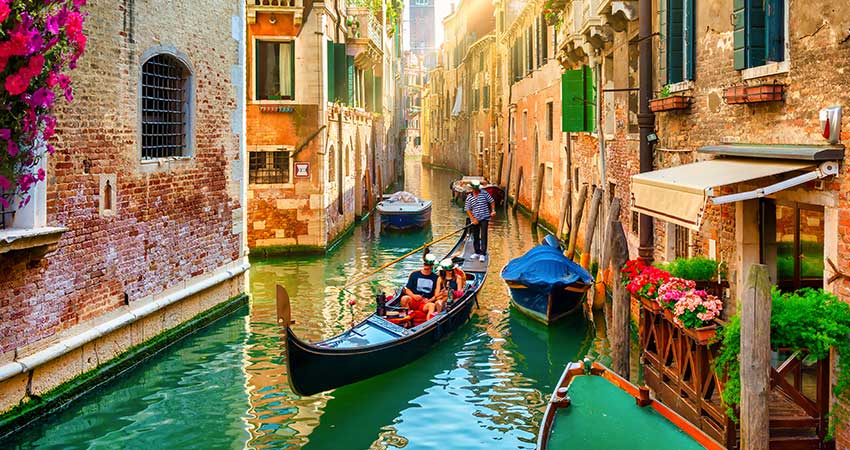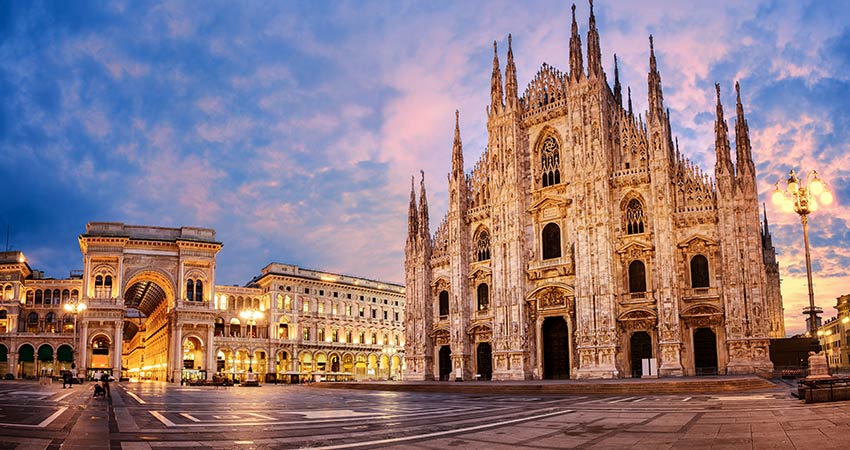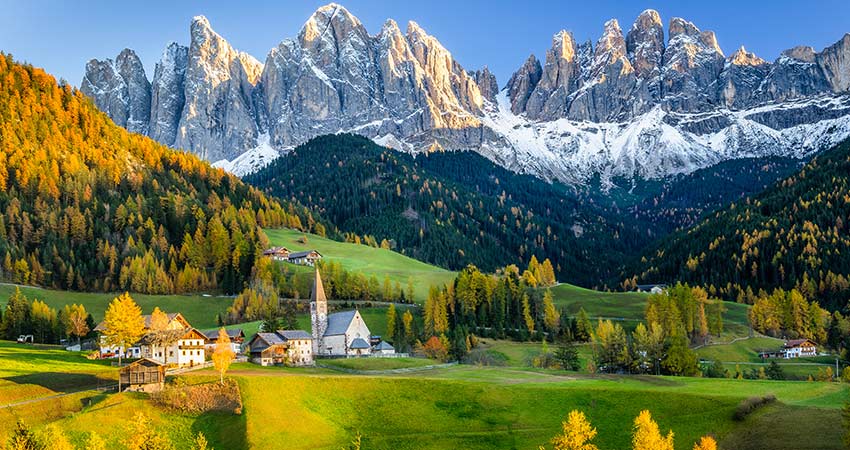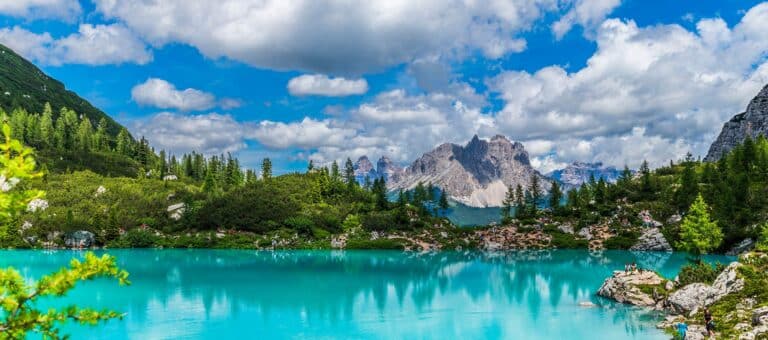Touring Northern Italy is like traveling through a fantasy of distinctive worlds. The Dolomites are the backdrop of stunning valleys, and they are heaven for adventurers. The villages and cities of Venice, Milan, Padua, Verona, Mantua, and Genoa fuel your imagination. Vineyards tumble to the sea across miles, offering up divine cheese and wines. All feel like a miracle. The only problem is deciding if you can spend enough time to get your fill.
Venice
Wander the lanes and alleys of Venice and let yourself get lost. In Venice, time seems like a silly invention. This city gave birth to extraordinary music, resplendent paintings, and cuisine straight from the Spice Route. Villas and palaces hug the shorelines of canals, and mysteries abound. Go to the Basilica di San Marco and be dazzled by 91,000 square feet of tiles—some are gold-leaf fused onto glass. Upon entering, you’ll see the 950-year-old Apostles with the Madonna mosaic. Breathtaking.
In 1987 UNESCO designated Venice’s 212-square-mile lagoon as a World Heritage Site. Explore Europe’s largest coastal wetlands on a boat tour for the day. Between September and January, more than 130,000 migratory birds build nests here, and the diversity of plants and animals is stunning. Go to the isle of Murano for blown glass, Torcello for churches hidden in pasturelands, and Burano for lace. At the end of the day, dine at Murano’s Trattoria Valmarana. Relax and feel time slip away as you enjoy the tranquil gardens, delighting in traditional Venetian food at its best.
The Veneto and Friuli
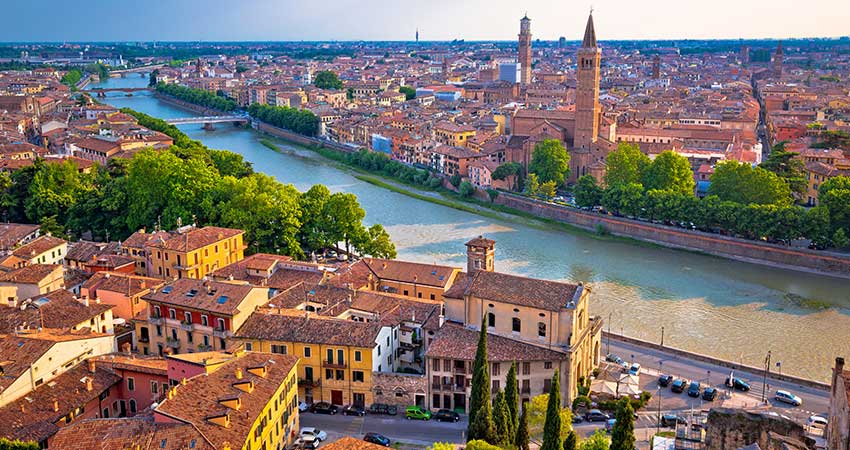
The Romans built forts on this rich farmland. Later, villas grew up with frescoed walls recounting ancient myths. Beach resorts and vineyards thrive in the shadow of the magnificent Dolomites. The medieval towns of Padua, Verona, and Vicenza are here for you to explore. Are you fond of Prosecco? If so, Veneto is a must. (Consider an autumn trip so you can take part in harvesting grapes.)
Verona is the largest city in this area, and its ancient center is dotted with Roman ruins as well as palaces built with local pink limestone. This city is famous for Romeo and Juliet—visit Juliet’s House. The Arena is a Roman amphitheater in the Piazza Bra. Completed in 30 AD, it’s one of the largest in Italy. After exploring this walkable city, head to Casa Perbellini. They have exquisite food with an open kitchen—chat with the chefs as they prepare your meal.
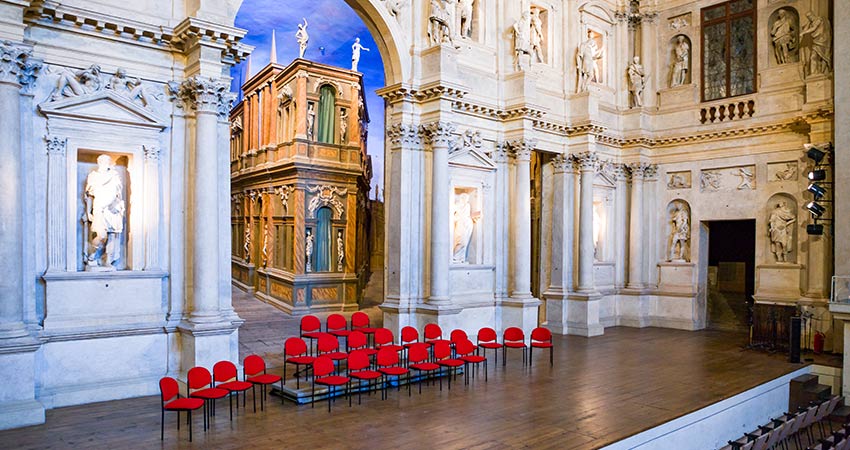
In Padua, visit the Basilica di Sant’Antonio. This exotic Byzantine church features Donatello’s reliefs, illustrating miracles. Then relax in the city’s botanical garden, one of the oldest in Europe, created in 1545. Next stop? The Scrovegni Chapel. Scrovegni built this chapel in 1303, with a prayer and a hope to spare his father the hell he was sure to face as a money lender. Giotto was hired to paint the frescoes inside, depicting the life of Christ. Considered the father of the Renaissance, the artist used colors and designs that are out of this world.
Vicenza is one of the wealthiest cities in Veneto and it is here that elegant architecture is celebrated every day. Take in a show at the Teatro Olimpico, Europe’s oldest surviving indoor theater. How about Friuli? It feels like Italy’s secret region. A premium winemaking area, this is the place for you if you like beautiful whites and sparkling wines that are similar to Prosecco.
Milan
Besides being Italy’s economic engine and world-fashion center, Milan has a rich cultural history. Surprisingly, it was founded in the 4th century BC and was first settled where the legendary Duomo is situated. The Romans came, made it the capital of their Western Empire, and it was here that Emperor Constantine made Christianity Rome’s official religion in 313 AD.
The city declined, then it rose again when the Sforza family grabbed power, ruling from the 14th to 16th centuries. They commissioned some of Milan’s most beloved palaces, churches, and art. The Austrians took control, the Milanese rebelled, and finally, in 1858, the King of Sardinia brought Milan into the kingdom of Italy.
Shopping in Milan is raised to an artform. The Galleria Vittorio Emanuelle II is a gorgeous Victorian shopping arcade with shops, cafes, and a stunning interior. The Corso di Porta Ticinese is a street for shoppers that seems to run forever. It’s popular with locals for vintage finds. If you want to shop like the rich and famous, Biffi is for you. This curated space carries designers such as Vera Wang, Hermes, Alexandra McQueen, and a slew of young designers on their way up.
Trentino-Alto Adige
The magnificent Dolomites rise above this linguistically and culturally diverse region. If you’ve been to Italy before, or if you simply want to travel to a lesser known place, consider Trentino-Alto Adige. The Dolomites were carved by glaciers, creating deep valleys for alpine flowers and forests. This was a favorite place for Neolithic people to pass through, and the Romans built their roads and villages upon the paths of early man.
Trentino is Italian-speaking and Alto Adige, or South Tyrol, is German. In the Middle Ages, Alto Adige came under the control of the Counts of Tyrol, and it hugged the Italian-Austrian borderlands. The Tyrols built castles to keep travelers safe as they passed through valleys and over mountains. Today, you’ll see these same Tyrolean castles, with their heavy timber balconies, impressive roofs, and astonishing views.
This wonderland is well-known for its buoyant hospitality. Skiers are wowed by the powdery slopes. Mountain climbers put it on their bucket list. Hot-Air ballooning is popular. Perhaps you’d like to cover the Dolomites on horseback. Do it on a local steed! (This area has 300 days of sunshine.) Adventurers also love Tree Parks. The Adrenaline Centre Adventure Park in Ronco and the Adventure Park in Colfosco offer thrills for outdoor enthusiasts of every age. And, after you’ve spent a day in the great outdoors, enjoy a restorative spa. Choose from either German or Italian dishes. These two cultures have comfortably lived together for centuries.
Northern Italy may be the place that checks all your travel boxes. Renaissance art, chapels, palaces, sweet villages, shopping, exceptional food and wine, adventuring in the mountains, and ancient Roman sites—it is all together ideal for an Italian dream vacation.
Let your Destination Expert know that you want to experience culture, ancient history, modern Italian design, and magnificent mountain sports in Northern Italy!


